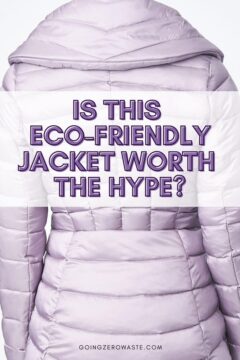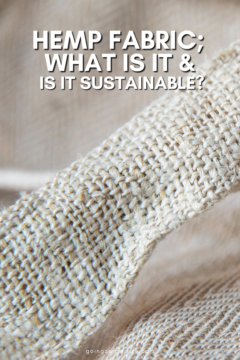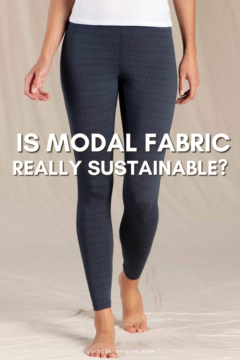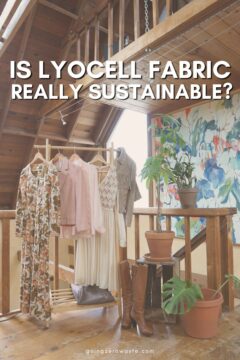Last Updated on March 28, 2023
There’s a lot of noise around bamboo fabric and bamboo fiber as being a sustainable alternative to silk and cotton. Is the love deserved or is it media hype, though?
The sustainability of bamboo fabric depends on how it is produced. Bamboo clothing can be made using rayon or viscose technology but requires a large amount of energy during production. Bamboo cloth made from lyocell is more sustainable as it involves recycling of chemicals and water. The best process (called mercerization) uses natural enzymes, instead of harsh chemicals, to produce bamboo linen. Choosing sustainable bamboo is key to textile bamboo being the solution to fast fashion.
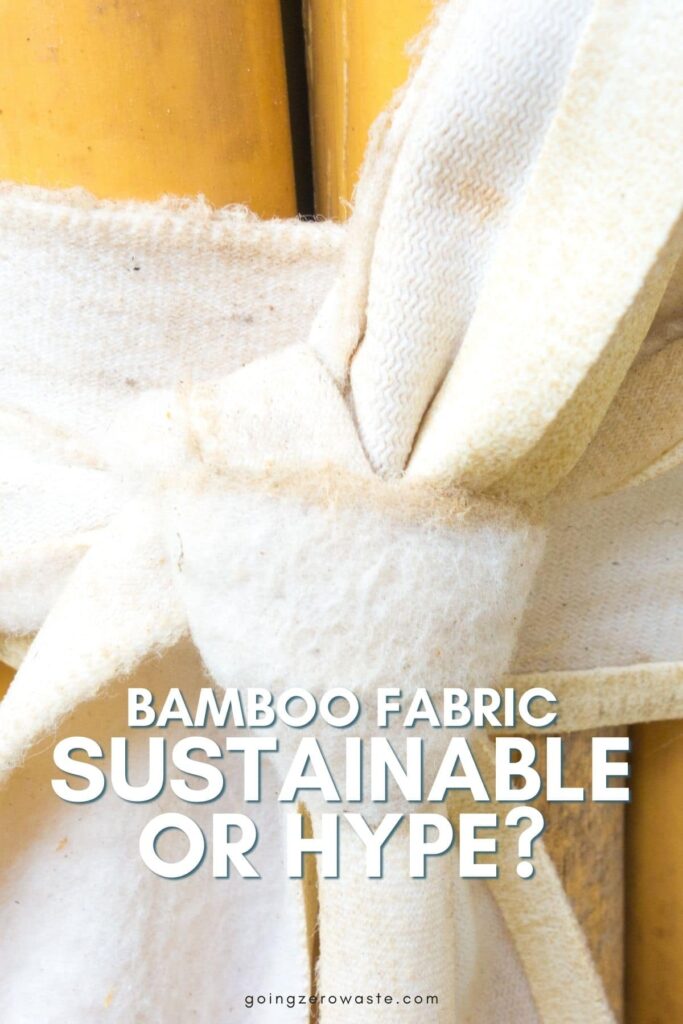
Table of Contents
sustainable bamboo
Aside from being the main diet of adorable panda bears, bamboo unveils another reason to love this giant grass. Bamboo fabric is quickly becoming a popular alternative to traditional fabrics such as cotton and silk. It is often touted as a sustainable fabric option because bamboo is a fast-growing plant. It needs very little water, fertilizer, or pesticides! What’s more? Bamboo is naturally regenerating, so harvesting bamboo still allows the plant to survive.
As with other sustainable fabrics that gain popularity so quickly, we need to examine: Is sustainable bamboo real or is it just hype?
To help you understand what bamboo fabric actually is, I did some research so you can decide if it is really a good purchase and how you can get your hands on some.
what is bamboo fabric?
The bamboo plant provides the main material: bamboo fibers which are harvested to make fabrics. Bamboo fabric is usually soft, cozy, and absorbent, and it can be used to make an abundance of textiles including shirts, bedsheets, socks, towels, and reusable diapers.
how is bamboo fiber made?
Bamboo material is made from the pulp of the bamboo plant. The stalks are crushed, and the cellulose is separated from the fiber. The cellulose is then turned into thread and woven into fabric. Bamboo fabric can be made from either rayon or viscose bamboo fiber.
Rayon bamboo fiber is made from chemically treated bamboo pulp, while viscose bamboo fiber is made from regenerated cellulose fiber. The process of turning bamboo pulp into thread requires a large amount of chemicals.
Bamboo cloth can also be made with an environmentally friendly method known as mercerization using natural enzymes. While there has been some debate about whether or not this method is more sustainable than the chemical route, it contributes less to environmental pollution.
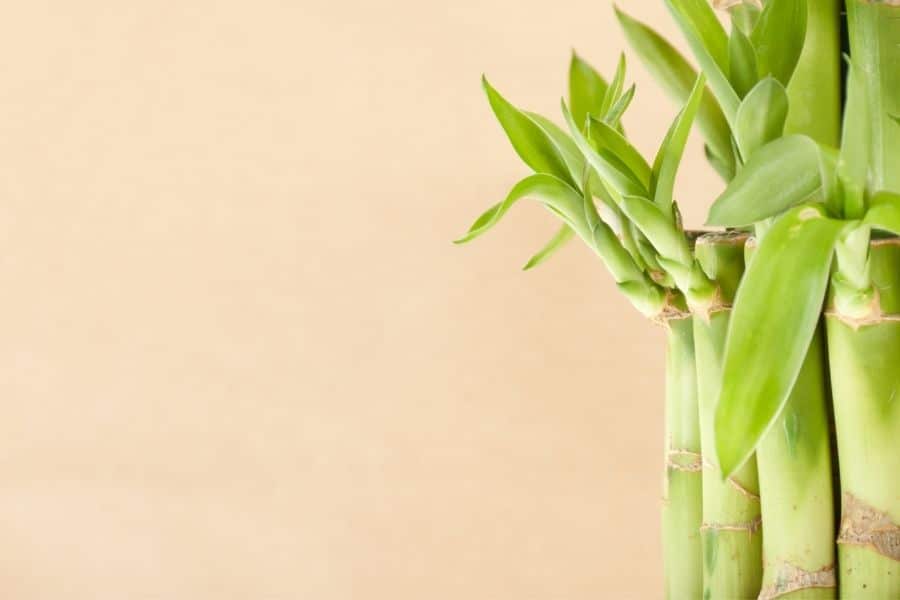
types of bamboo fabric
According to the Natural Resources Defense Council, or NRDC, some bamboo is more sustainable than others. Currently, there are three types of bamboo cloth:
- Conventional Viscose Bamboo Rayon – Compared to traditional rayon, bamboo rayon or viscose is greener since it does not use old growth or clear-cut trees for its production. However, it requires a chemical-intensive process when spun. The chemicals used to make rayon or viscose bamboo fiber include carbon disulfide and sulfuric acid.
- Lyocell Process Bamboo Rayon – Developed by Lenzing Industries, who originally created the process, Lyocell has become a popular fabric among many fashion designers. Its chemicals and water are recycled and never released into the environment.
- Bamboo Linen – In this process, bamboo is cut into smaller pieces and turned into a mash by using natural enzymes. From there, it can be combed to extract the natural fibers and spun into yarn. This cycle requires significantly fewer resources than bamboo rayon because the plant is mechanically processed. This process is called mercerization.
pros and cons of bamboo cloth
People around the world are enjoying this eco-friendly fabric’s beneficial qualities, including:
- Antimicrobial
- Renewable
- Durable
- Breathable
- Elastic
And best of all, it feels just as great as regular old cotton! Bamboo materials absorb color beautifully and hold on to those colors well. The fibers also shine in the sun when dyed, giving them a unique glow.
Although all of these qualities make bamboo fabric sound wonderful, it’s not perfect. There are a few disadvantages to this fiber. These include:
- Scratchy and rough against sensitive skin
- Shrinks when washed at high temperatures or dried in dryer
- Sustainably sourced bamboo is pricier than traditional, non-sustainable fabrics such as cotton and silk
- Not recommended for cooler climates due to its moisture wicking properties
- Some bamboo fabrics are manufactured with harsh chemicals
The drawbacks of bamboo fabric are minor compared to its many advantages. This natural material is sustainable and environmentally friendly because it requires reduced farming inputs like fertilizer, pesticides, and water in comparison with other types of fabrics — which also require heavy harvesting machinery.
Another plus? The plant can help protect steep banks from erosion. So, if you’re looking for something eco-friendly to wear that will make you look and feel great, give bamboo fabric a try!
adding bamboo clothing to your wardrobe
While bamboo fabric is growing in popularity, it isn’t always readily available in local stores. This means that deciding where to purchase your material can sometimes be difficult. However, there are many online shops that sell bamboo fabric as well as other sustainable fibers such as organic cotton or hemp.
When choosing which bamboo material to purchase, remember to consider the durability and softness of the fabric as well as whether or not it is mercerized. This way, you can ensure that it has undergone the least amount of chemical processing possible.
mercerization for textile bamboo
Mercerization also prolongs the life of your garment by adding strength to its textile bamboo, which means you will be able to enjoy your item for longer. It uses fewer harsh chemicals during production.
Plus, it also ensures that you are exposed to less harmful substances while wearing it compared to viscose bamboo fiber garments which are only semi-synthetic.
- ONNO: ONNO is a US-based bamboo clothing brand with their own trademarked fabric – ONNOcell, made of 70% lyocell from organic bamboo and 30% organic cotton. ONNO has a GOTS (Global Organic Textile Standard) certification, a textile production certification that is given to businesses limiting the use of toxic bleaches, dyes, and other chemical inputs during the production process of textiles.
- Cariloha: Cariloha sells almost every type of clothing made from bamboo fiber as well as beddings, pillows, mattresses, and bedsheets! They source their raw materials from their own bamboo farm in Sichuan Province, China, where Cariloha produces bamboo viscose using a GOTS-approved chemical solution.
- Free Fly: Free Fly is popular among parents looking for sustainable kids’ clothing. The company is a family-owned business that sells dress apparel made of bamboo fabric. Free Fly sources its raw bamboo from China’s northern forests, where bamboo grows on regenerative farms certified by FSC (Forest Stewardship Council). The FSC certification indicates that bamboo is grown using minimal water and without pesticides or fertilizers.
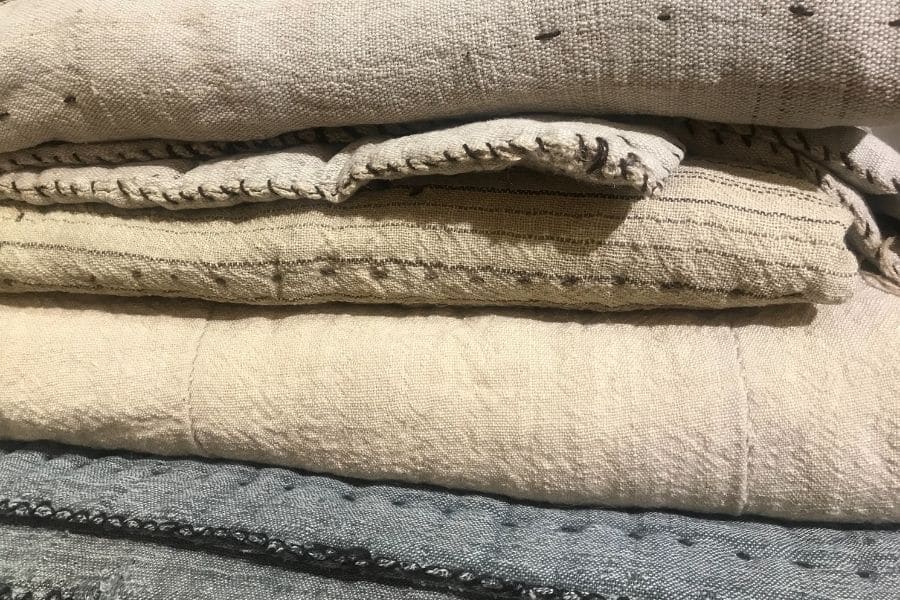
faqs
how do you care for bamboo fabric?
Bamboo fabric is relatively easy to care for. Bamboo fabric can be machine washed or dry cleaned. It is better to use cold water, as bamboo fabric has a tendency to shrink when exposed to high temperature water. Avoid using bleach or fabric softener and choose a gentle detergent.
what’s the difference between bamboo fabric and cotton?
When it comes to the raw material, bamboo is better. Bamboo is naturally pest resistant and does not require fertilizers, compared to conventional cotton. Additionally, bamboo consumes less water than organic cotton. But when it comes to the final product, check how your bamboo clothing is made to determine overall sustainability.


